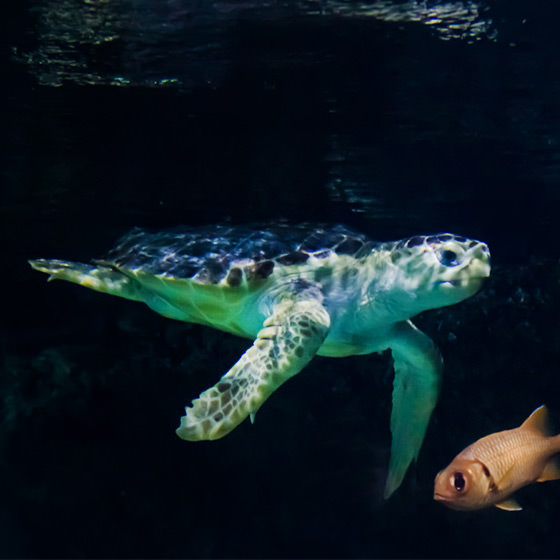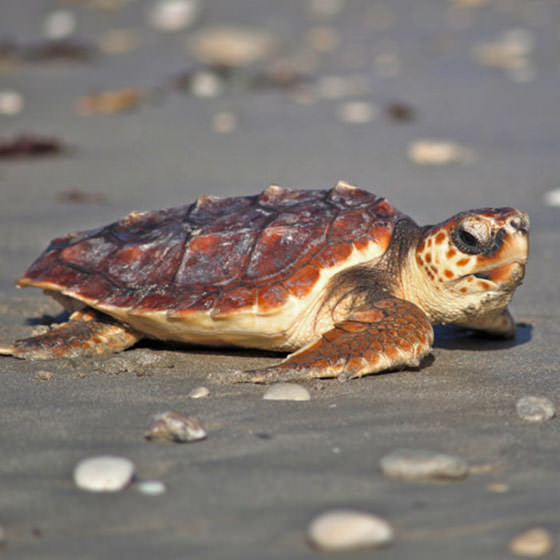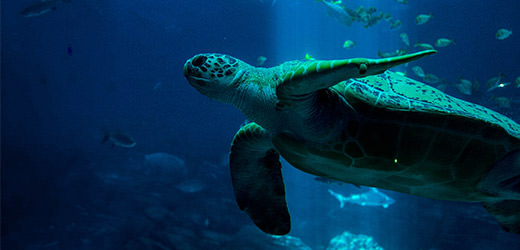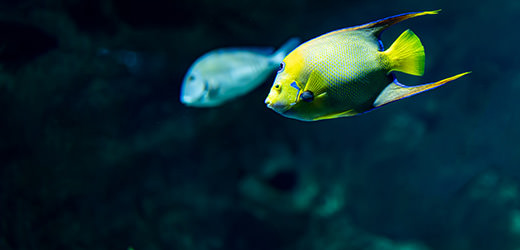Biology
The loggerhead turtle is commonly known as the «big-headed turtle» and can also be recognized for its heart shaped shell.
It feeds on small fish, molluscs, jellyfish and crustaceans whose shells it can crush thanks to its powerful jaws.
Many plant and animal species travel the oceans attached to its shell, turning this species into a veritable floating reef.




